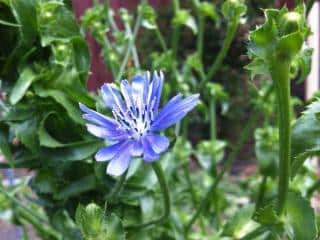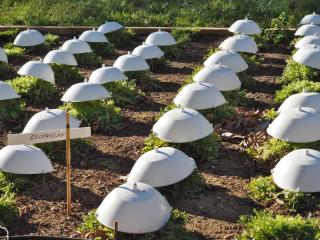

Escarole is a salad green that is appreciated for its delicious leaves and for the ease of its growing and its hardiness.
Key Escarole facts
Name – Cichorium endivia or latifolium
Family – Asteraceae
Type – annual
Height – 8 to 12 inches (20 to 30 cm)
Exposure – full sun, part sun
Soil: ordinary – Harvest: around 6 weeks after sowing
Escarole is often grown in summer and fall, but it can also be sown earlier for a harvest in spring.
It is then sown under shelter in rows from February to October. Starting early is possible, but you’ll need to protect your seedlings from the cold with cold frames, garden cloches or tunnels.
As for summer sowing, know that escarole loves staying cool to develop well.
In all cases, thin sprouts down to one every 10 to 12 inches (25 to 30 cm) as soon as the first leaves appear.
Did you know that escarole is perfectly suited to growing in pots or garden boxes? You’ll be able to savor it directly from your balcony or terrace.

You can plant them in the ground, either in your vegetable patch or in a garden box on a terrace or balcony.
As soon as the escarole is large enough, it is important to blanch it.

It is best to blanch only as much as you need to harvest, because once blanched, escarole won’t keep for very long.
Escarole resists very well when the first colds hit, and will thus last deep into fall.
After having forced (blanched) them, harvest your escarole by cutting them off at the root crown.
Escarole is one of the most hardy lettuce-type greens.
It is possible to harvest escarole all season round, and even during winter.
As soon as the cold hits, protect your seedlings and plants with a small greenhouse, a tunnel, or any other device that will help your escarole grow even though temperatures are below freezing, providing as much light as possible.
A sub-species of endive, escarole is rather easy to grow. Escarole doesn’t require much care during its entire growth phase, except for light regular watering.

There are also many trace elements, fibers, minerals and vitamins that our bodies require.
Stage escarole sowing dates and varieties to produce escarole almost all year long.